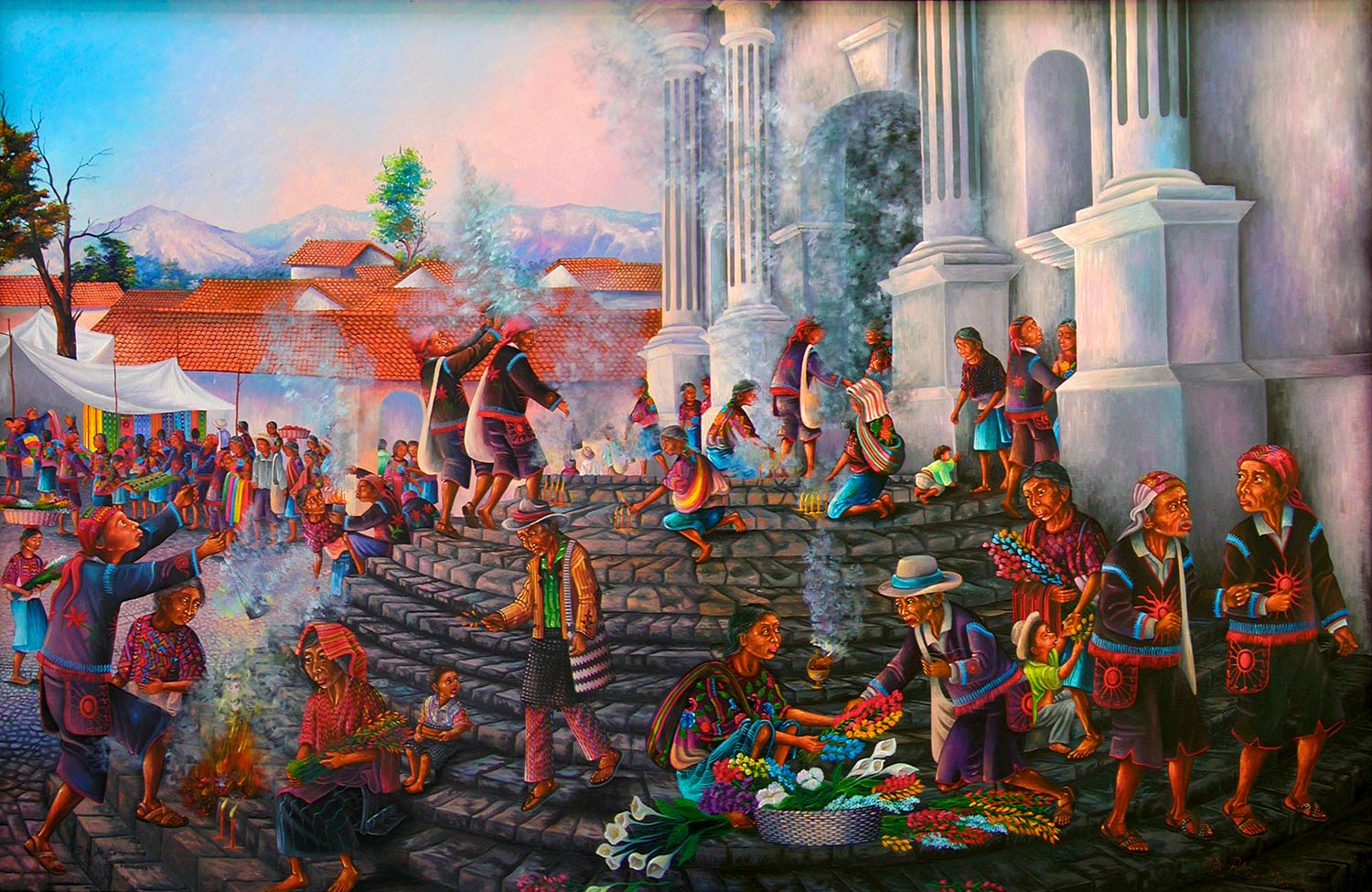In the town of Chichicastenango, the Popol Wuj, the pre-Hispanic creation story and history of the K’iche’ Maya, was written down, forgotten, and discovered centuries later. The steps of the church were built with stones from a Maya altar that was on the site. There are twenty steps, one for each day of the Maya ceremonial calendar. Every day, Maya spiritual guides perform ceremonies on the steps.
The steps of the Church of Santo Tomás in Chichicastenango thus constitute an important line of demarcation between Maya spirituality and the Catholic church—the most visible place in the Maya world where a mix of both traditions is practiced. The Maya rituals performed daily by the Ajq’ijab’(Maya spiritual guides) on the steps, as depicted in the painting, are not permitted inside the church proper. The Church of Santo Tomás has witnessed perpetual prayers both Christian and Maya over the centuries. A constant flow of mostly Maya pilgrims enter, light candles, and pray. A profound sacredness fills the space, touching everyone who climbs the stairs and crosses the threshold.
The Church of Santo Tomas was built on the site of an ancient Maya altar. The stones of the steps are reputed to be from the original Maya altar with each of the twenty steps corresponding to a day of the Maya calendar. The Ajq’ijab’ performing the ceremonies are day keepers, people who keep track of the Maya calendar and the significance of each day. In the plaza in front of these stairs, the famous market of Chichicastenango takes place on Thursdays and Sundays. The candles, flowers and incense for the ceremonies are sold daily in stalls nearby.
In 1702, a K’iche’ Maya shared a manuscript with Francisco Ximenez, a parish priest for the Church of Santo Tomas. This manuscript, written in K’iche’ using the Latin alphabet, came to be known as the Popol Wuj. It is one of the few written accounts of the pre-Hispanic Maya religious beliefs, including the creation story, to survive destruction at the hands of Catholic priests. Ximenez copied the original Maya manuscript, translating it from the K’iche’ into Spanish, with the two texts aligned in parallel columns. Ximenez’s copy now resides at the Newberry Library in Chicago. The original K’iche’ manuscript he copied is assumed to be lost.


